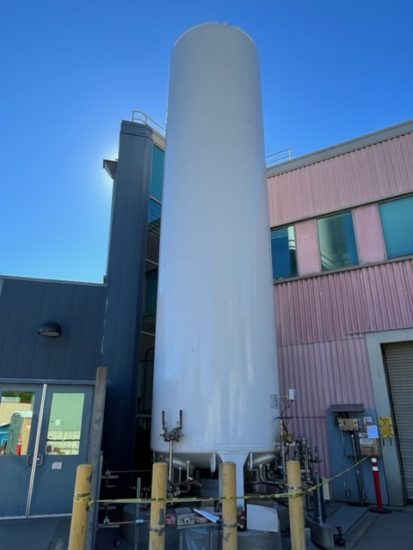The Advanced Light Source returned to user operations on August 23 after the 2022 summer shutdown. Let’s take a look at some of the projects all around the facility.

As in other recent shutdowns, the main driver was installation work for the ALS-U accumulator ring (AR). Many more stands for the AR magnets were installed, and only a few remain to be installed in a future shutdown. The AR will be installed on these stands over the next few shutdowns. As a consequence, the walkway in the tunnel is now narrower than in the past in most places, since the AR stand ends protrude into the walkway.
Some of the support structures for the future booster-to-accumulator-ring transfer line were installed. In addition, many more cable trays for the AR were installed. The cables powering the AR magnets will eventually be put into these cable trays (reminder: with the exception of the insertion devices, which use permanent magnets, all magnets at the ALS are electromagnets). Another installation project involved the very first piece of vacuum chamber.
One big project, which extended past the shutdown but is now finished, was the replacement of the 6000-gallon liquid nitrogen tank. The vacuum sleeve on the old tank had broken months ago, leading to more nitrogen being boiled off than necessary. The new tank is in place now and is serving the house lines.

The lighting inside the storage ring is also being upgraded in steps. During this shutdown, new conduits and junction box infrastructure were installed. The lighting project will be completed during the next shutdown.
People at the facility may have noticed a flurry of activity at the top of the ring. Some of the booster infrastructure was moved from the pit onto the booster shielding to make room for the new booster bend power supply. That power supply, which will enable us to increase the energy in the ring from 1.9 to 2.0 GeV, will be installed and commissioned during a future shutdown.
The master oscillator was replaced with a new state-of-the-art frequency synthesizer. Also additional hardware was installed as part of the first stage of the rf distribution upgrade. The new system will use optical fibers for signal distribution, greatly improving reliability and performance.
The SR2 straight section between the first and second storage-ring arcs was realigned to address stray field issues. The LEDA in-vacuum insertion device that serves the Gemini beamline and is located in that straight section was also inspected. The vacuum pressure inside the device had been higher than expected and magnetic field issues were also suspected. Since the inspection required breaking the vacuum, a blank-off (solid, opaque) flange was replaced by a glass viewport so that future inspections can be done without having to break vacuum.
“It’s always an amazing experience to watch the shutdown life cycle come to a successful conclusion,” said ALS Deputy for Business Operations Steve Rossi, who oversaw the shutdown planning and execution. “There’s so much up-front planning, lots of problem solving along the way that most don’t see, and of course the amazing work by our accelerator operations team to get the machine running again for our users. It’s just such a relief and a moment of pride for all those involved,” he added.
Rossi noted that recent shutdowns have been more complex because of COVID and the increased work scope of the ALS-U project. “We’ve risen to those challenges, increased some of our planning rigor, and stand ready to complete all the ALS-U work required before the ALS-U dark period scheduled to begin in October 2025,” he concluded.